You know what sounds a bit scary? A rogue wave.
They’re seemingly random, massive walls of water. If you’re nervous about cruising, then the knowledge that these mammoth waves exist might put you off.
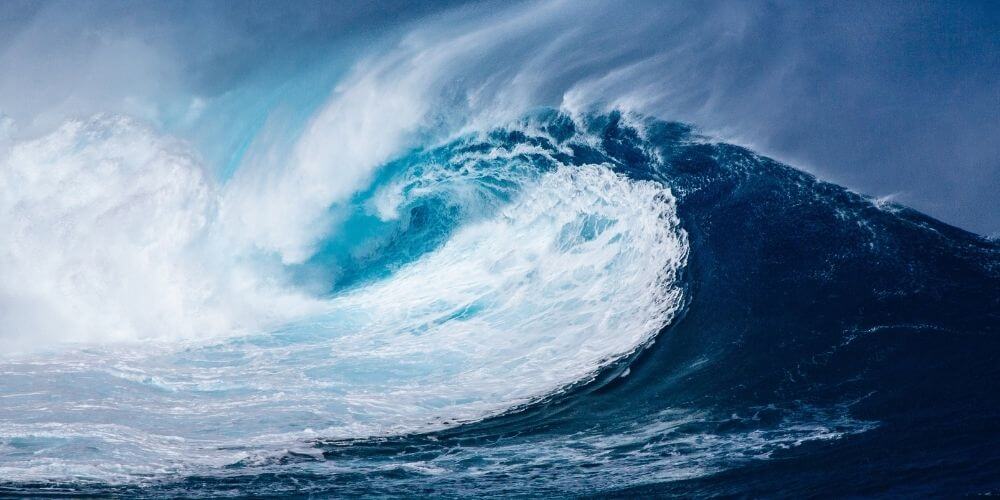
But how much should you really be worried?
Rogue Waves Explained
A rogue wave is a wave that appears suddenly on the surface and is unusually large for that part of the ocean. While research is still being carried out into their cause, it’s believed to be a combination of high winds and strong currents causing smaller waves to merge.
Rogue waves are technically defined as “waves that are at least twice the significant wave height”.
The significant wave height is the average of the largest third of waves within a particular wave record. Put simply, rogue waves are twice as large as the average of the largest waves in a particular area.
That means that rogue waves might not always be the absolute tallest waves in the ocean, but they will be unusually large for the area and state of the sea at that time. And they can get to be pretty huge.
The Size of a Rogue Wave
Because the rogue wave definition is relative to the sea state, the official tallest rogue wave isn’t actually the tallest wave ever. Instead, scientists have decided that the title of ‘biggest rogue wave’ belongs to the wave which is biggest in comparison to the other waves nearby.
Officially, the tallest rogue wave recorded was a 58-foot tall wave off the coast of British Columbia in Canada, identified in 2020. That height put it at almost three times the height of the other waves around it. [Source]
There have been much taller waves recorded – indeed the first-ever officially recorded rogue wave was in 1995 off the coast of Norway and measured 84 feet. However, as that was ‘only’ twice the height of the surrounding waves at the time, it isn’t considered the largest rogue wave.
While official records have only been kept since 1995, evidence suggests many waves have reached heights of up to 120-feet in the past. [Source 1] [Source 2]
So to be clear – the 58-foot tall wave is not the largest wave, and there have been some much larger waves. It’s just that the 58-foot wave is officially recorded as the biggest above the average for the area.
Suggested read: How Big is a Cruise Ship?
Where Rogue Waves Appear
Because of the ongoing research into the causes of rogue waves, and their formal documentation being relatively recent, it’s hard to say where they occur the most frequently.
In the 21st century, there have been recorded rogue waves in the Gulf of Mexico, the northern Pacific, the Mediterranean near Catalonia, and off the coast of Newfoundland in Canada.
Prior to this, there have been may more rogue waves recorded around the world too, before they were officially designated as such.
They seem to be mainly caused anywhere where there is a strong current running in the opposite direction of the tidal waves. But, that doesn’t line up with all of the examples – there seem to be multiple causes.
The MaxWave Project, led by a team at the Technical University of Berlin, have run studies that show that rogue waves appear to be formed when slow-moving waves are caught up by a series of faster waves moving at more than twice the speed of the slow ones. The waves combine and create much bigger waves.
Scientists are getting better at documenting rogue waves, and we’re learning that they’re not as rare as we thought, but they are still rare.
Suggested read: The 8 Roughest Seas For Cruise Ships
Rogue Waves Vs Tsunamis Vs Tidal Waves
Sometimes, rogue waves can be confused for tsunamis or tidal waves, but in name only. All three are very distinct.
Let’s start with tidal waves – these are actually just the scientific name for the waves caused by the tide, resulting from the gravitational forces of the moon. They are, therefore, completely predictable since we can know when the moon is in its different phases.
Tsunamis have sometimes been called tidal waves in the past, but that is incorrect. A tsunami is a distinctive, one-off wave caused by a huge shift of water, usually as the result of an earthquake beneath the surface, causing the plates to move.
That huge swell of displaced water will then rush in a large movement. It will not be too noticeable out at sea because it’s just a raised water level – it doesn’t cause single large waves to form. So, tsunamis are rarely an issue to ships out at sea.
The problem is that the huge swell will continue to coastal areas, where it forms one giant wall of water which will break on the coastline.
Rogue waves are one-off, unpredictable waves, and while we don’t know the full causes yet, we know they aren’t related to land movements or the normal gravitational pull. As a single wave, they’re much more of a threat to ships at sea.
Rogue Waves Could Sink a Ship – But It’s Unlikely
A rogue wave could sink a ship, although most modern cruise ships are big enough to withstand the majority of smaller rogue waves, though not without damage.
Smaller ships are more at risk, but they are also more manoeuvrable so would stand a higher chance of being able to navigate out of the wave’s path.
Since rogue waves were officially recorded – beginning in 1995 – only a small number of ships have been struck by a rogue wave and then sunk.
One confirmed rogue wave incident occurred with the R/V Ballena, a 56-foot research vessel that capsized in 2000 and then broke apart against the rocky shore.
Other ships that have sunk due to stormy weather and large waves (though not necessarily official rogue waves) include:
- The Harta Rimba – a 100-foot passenger ship with 332 people onboard
- MV Cordigliera – a transport ship with 29 crew onboard
- SS El Faro – a cargo ship that sank in hurricane conditions with 33 people onboard
There have been reports of rogue waves prior to their official recognition before 1995 that have sunk ships, including:
- The wooden cutter Aenid was wrecked off the coast of New South Wales in 1865
- Passenger ship SS Waratah disappeared in 1909 off the coast of Durban, South Africa with no wreckage found. It’s believed that a rogue wave capsized and sank the ship
- US Navy cruiser USS Memphis was wrecked by three successive large waves in 1916, attributed to nearby hurricanes
- The SS Edmund Fitzgerald, a lake freighter, sank during a storm in 1975, believed to be a result of the waves
- Fishing boat Andrea Gail sank during the 1991 ‘perfect storm’, and was the subject of the 2000 movie starring George Clooney and Mark Wahlberg.
Check out the full list of rogue waves here.
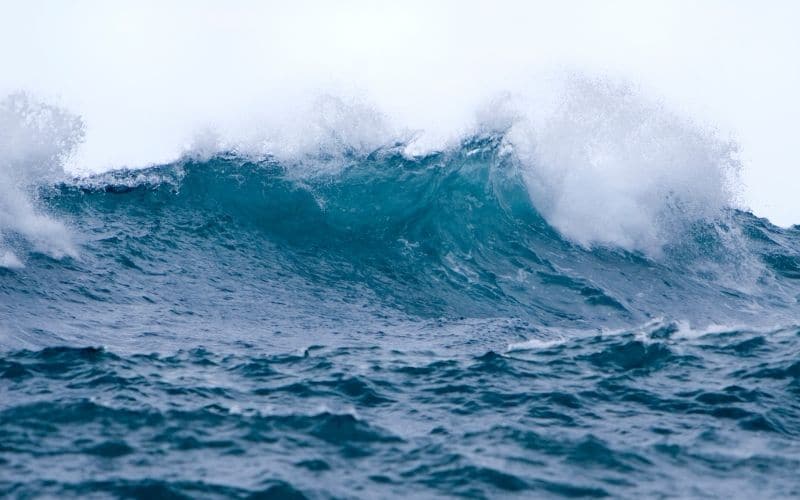
The Size of Waves a Cruise Ship Can Handle?
Cruise ships are generally built to handle most waves in the ocean – they can routinely sail through 10-15 feet waves without issues. Waves up to 50 feet typically won’t sink a ship, but can cause damage.
Waves up to 15 feet may not sound too big when compared to other rogue waves in this article, but picture standing on the shore and seeing a wave of 15 feet coming towards you. Doesn’t seem so small now, does it?
On a cruise ship, though, you would likely be absolutely fine, unless you suffered from seasickness. With 15 feet waves, you’re going to want to tap into any techniques you have for handling your sickness. This includes spending time on a low deck.
Rogue waves can be a lot higher, and cruise ships may take damage from them. Guests will be told to stay indoors and to move away from windows.
If a huge rogue wave was to break on a cruise ship, it could be a very severe incident.
The officers on a cruise ship are very experienced sailors and will know what to do in the event of a rogue wave. They will make sure to keep passengers safe and prevent as much damage as possible to the ship.
There have been huge super-tankers crippled and destroyed by the biggest rogue waves, but cruise ships are much less likely to sail into stormy waters, reducing the risk considerably.
This video shows what it could be like on board a cruise ship on the roughest seas…
As you can see from the amount of damage done to the fixtures and fittings and the potential for minor injuries from the debris, a situation like this is something that a cruise ship captain will certainly want to avoid!
How About Flipping a Ship?
It is highly unlikely that a wave could flip a cruise ship. They are built to be wide and have a heavy enough ballast on lower decks that they will survive rogue waves. It would also rely on the negligence of the crew to allow the ship to hit perfectly on the side.
The only way that a cruise ship would be able to be flipped over is if it took the wave hit perpendicular on the port or starboard side, along the beam. Most of the time, ships will aim to hit a wave bow-first.
And the thing about rogue waves is that they might be unpredictable and sudden, but you can hardly miss them. The job of the navigation crew is to be on the lookout for hazards such as rogue waves and to react to them.
In many cases they wouldn’t be caught off-guard by a huge wave suddenly coming for the ship. However, there may be times where a rogue wave can strike suddenly, with little time to react.
Modern cruise ships also have wonderfully advanced steering and propulsion methods that allow them to turn quickly. Providing the crew haven’t all fallen asleep or abandoned their posts, they will usually have time to react to a rogue wave and make sure the ship takes it as safely as possible.
Read more: Why Do Cruise Ships Not Tip Over?
That doesn’t mean that a rogue wave would leave a cruise ship completely untouched. There’s likely going to be some damage, depending on the height of the wave. But, she wouldn’t flip, and passengers would be generally safe, most of the time.
History of Cruise Ships & Rogue Waves
Cruise ships have been hit by rogue waves in the past, but it is not a common event. Since official records of rogue waves began in 1995, eight cruise ships have hit rogue waves.
All suffered damage, some reported injuries, and one passenger sadly died onboard the Viking Polaris in December 2022.
The most recent incident happened when Royal Caribbean’s Explorer of the Seas was hit by a rogue wave in November 2024. The ship tilted dramatically, items were sent crashing to the floor, and at least one person was injured.
Hurtigruten’s MS Maud was hit by a rogue wave in December 2023. She suffered damage and was temporarily without power, but she was towed to safety and nobody was seriously hurt.
User “Sea & son” (@OnDeepWater) shared these dramatic clips on X/Twitter:
MS Maud #hurtigruten now pic.twitter.com/i5m2qSJIrr
— Sea & son (@OnDeepWater) December 22, 2023
MS Maud pic.twitter.com/mfofaAePDs
— Sea & son (@OnDeepWater) December 23, 2023
Another of the recent incidents involving a cruise ship being hit by a rogue wave was the case of the Viking Polaris in December 2022. A US woman was killed, and four other guests were injured when a rogue wave struck the ship when it was sailing towards Ushuaia on an Antarctic cruise.
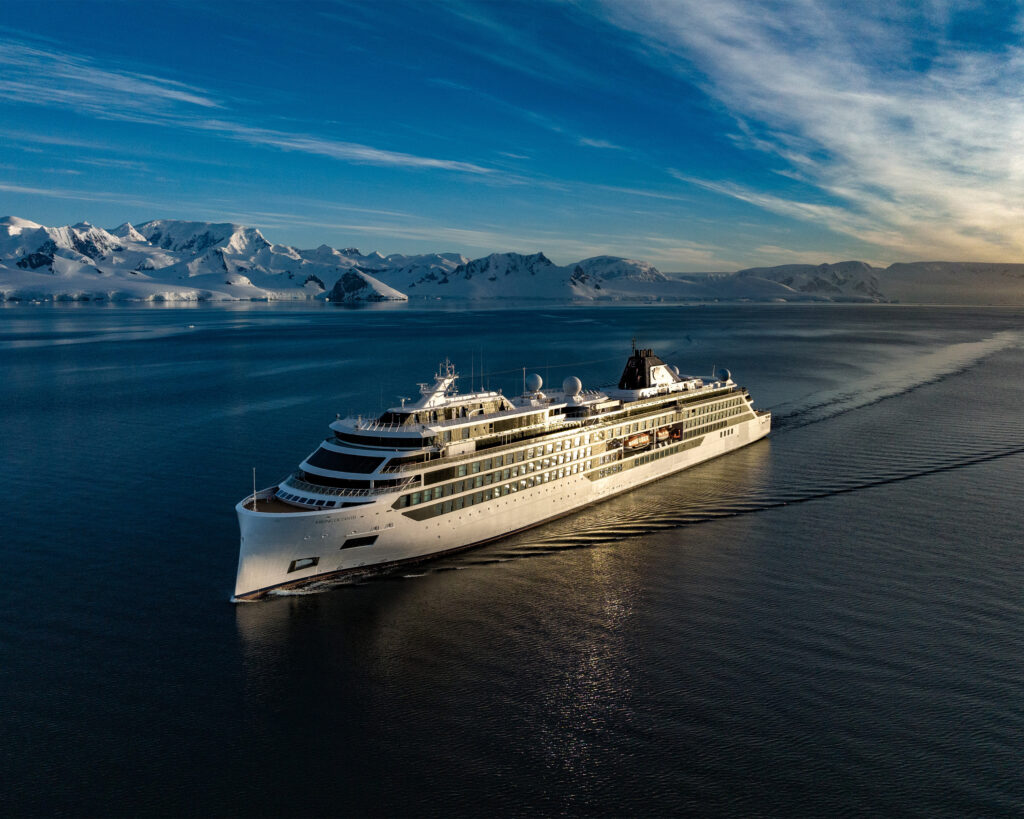
The 62-year-old passenger sadly died as a result of being hit by broken glass when the wave smashed a window in her cabin during the storm. The other injured passengers suffered injuries that were not life-threatening.
Three of the other instances of rogue waves also happened in the South Atlantic and also involved small cruise ships. Both the Caledonian Star and the MS Bremen were hit by rogue waves in 2001. These were huge waves, measuring almost 100 feet tall.
Both ships suffered smashed windows on the bridge, along with losses to power and navigation controls. Neither ship reported any serious injuries, though, with the crew of the Bremen able to restore engine power. The Caledonian Star did have to limp back to port for repairs. These were serious incidents and the ships were lucky to not suffer injuries.
The third South-Atlantic incident occurred in March 2007 when the MS Prinsendam was hit by two 40-feet waves in a row. It happened near Cape Horn and resulted in around 40 injuries to passengers.
Of the larger cruise ships, Cunard’s Queen Elizabeth 2 was hit by a 90-foot tall rogue wave in 1995 caused by Hurricane Luis. She suffered minimal damage. There were a handful of injuries to those on board, but nothing believed to be too serious.
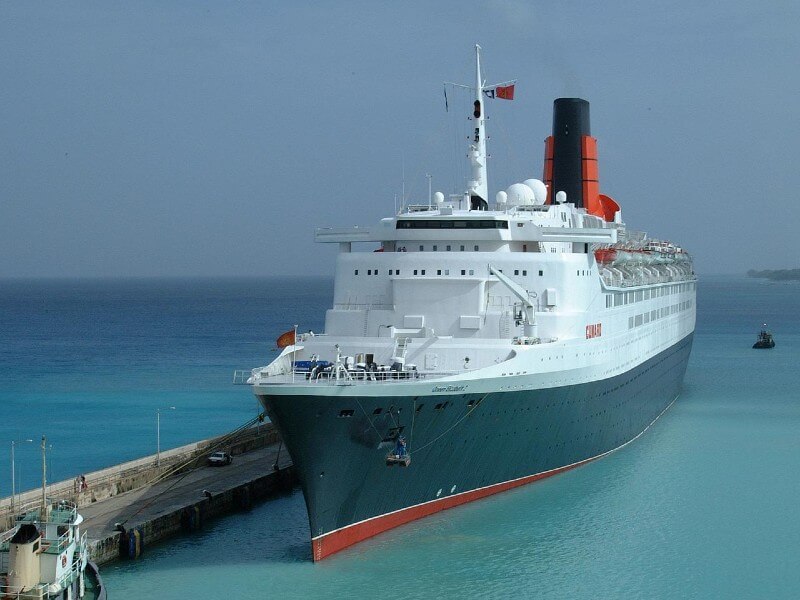
Suggested read: How Big is a Cruise Ship?
In another instance, NCL’s Norwegian Dawn was hit by three freak waves off the coast of Georgia in 2005, one of which was around 70 feet tall.
It reached the 10th deck of the ship, breaking two windows (caused by balcony railings breaking free) and flooding over 60 cabins, along with some public areas. There were a handful of injuries and the ship was able to sail to port without any further trouble for repairs to be made.
Remember that these are only since the official records of rogue waves began. It’s widely accepted that the Queen Mary was hit by a rogue wave in 1942 and that she suffered a lot of damage, and listed heavily.
Cruise Ships Would Typically Survive Rogue Waves
A cruise ship would usually survive if hit by a rogue wave. All modern instances of cruise ships encountering rogue waves have resulted in damage, but the ship hasn’t sunk.
The safety of passengers is always the priority of a cruise line, which is why only highly experienced crew are hired who know exactly what to do in any situation, even one as rare as a rogue wave.
The fact that cruise ships are so large and so well-built means that it would be difficult for a rogue wave to counter the ballast to the point of capsizing it, and they’re strong enough to not break apart as well under the duress of most rogue waves.
A rogue wave that was big enough potentially could do it, so while there are never any guarantees, it would be a true freak incident if one ever was to capsize due to a rogue wave.
And some rogue waves are extremely powerful and could cause severe enough damage to lead to the sinking of a ship, but again it would be exceptionally rare.
When I first published this guide, Captain Michael Lloyd, RD**, MNM, CMMar, FNI,YB, RNR wrote to me to add some more information, so I’ve updated the guide to reflect this. He has spent over 50 years at sea and was in command of various ships for 35 years, so his knowledge has been very valuable.
Captain Lloyd said that the size of cruise ships – especially some of the largest ships – does mean they’re more at risk, especially as they’re generally built for fair-weather conditions and designed to avoid stormy weather. And rogue waves can happen quickly, so the weather can’t always be avoided easily.
The height of some cruise ships does mean they’re more prone to listing, but to actually capsize one would be an exceptionally rare event.
Captain Lloyd has also written a novel about cruise ships.
Ships Lost to Rogue Waves
Most ships that have encountered a rogue wave have survived with minimal damage. There have been some incidents where ships are lost to rogue waves, but with cruise ships these are very minimal.
Smaller ships are lost to rogue waves more commonly, but it’s hard to give exact numbers of exactly how many are lost due specifically to rogue waves, since ‘regular’ stormy waters can also cause smaller ships and boats to sink.
The Bottom Line
Rogue waves are intimidating if you’re on a small boat, but cruise passengers shouldn’t worry too much, especially on larger cruise ships.
Yes, the largest waves may cause some damage, and potentially some injuries due to broken glass. But they’re such a freak occurrence that passengers need not let that rule their head – millions of passengers enjoy a cruise each year without incident.
Related Posts:
- How Hurricanes Can Affect Cruises
- How Cold Was The Water When The Titanic Sank?
- 15 Best Quotes About Rough & Stormy Seas
- What Is The Bottom Of A Ship Called?
- The 11 Worst Cruise Disasters in History
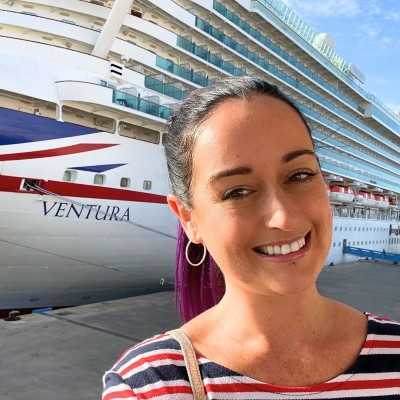
Jenni Fielding is the founder of Cruise Mummy. She has worked in the cruise industry since 2015 and has taken over 30 cruises. Now, she helps over 1 million people per month to plan their perfect cruise holidays.

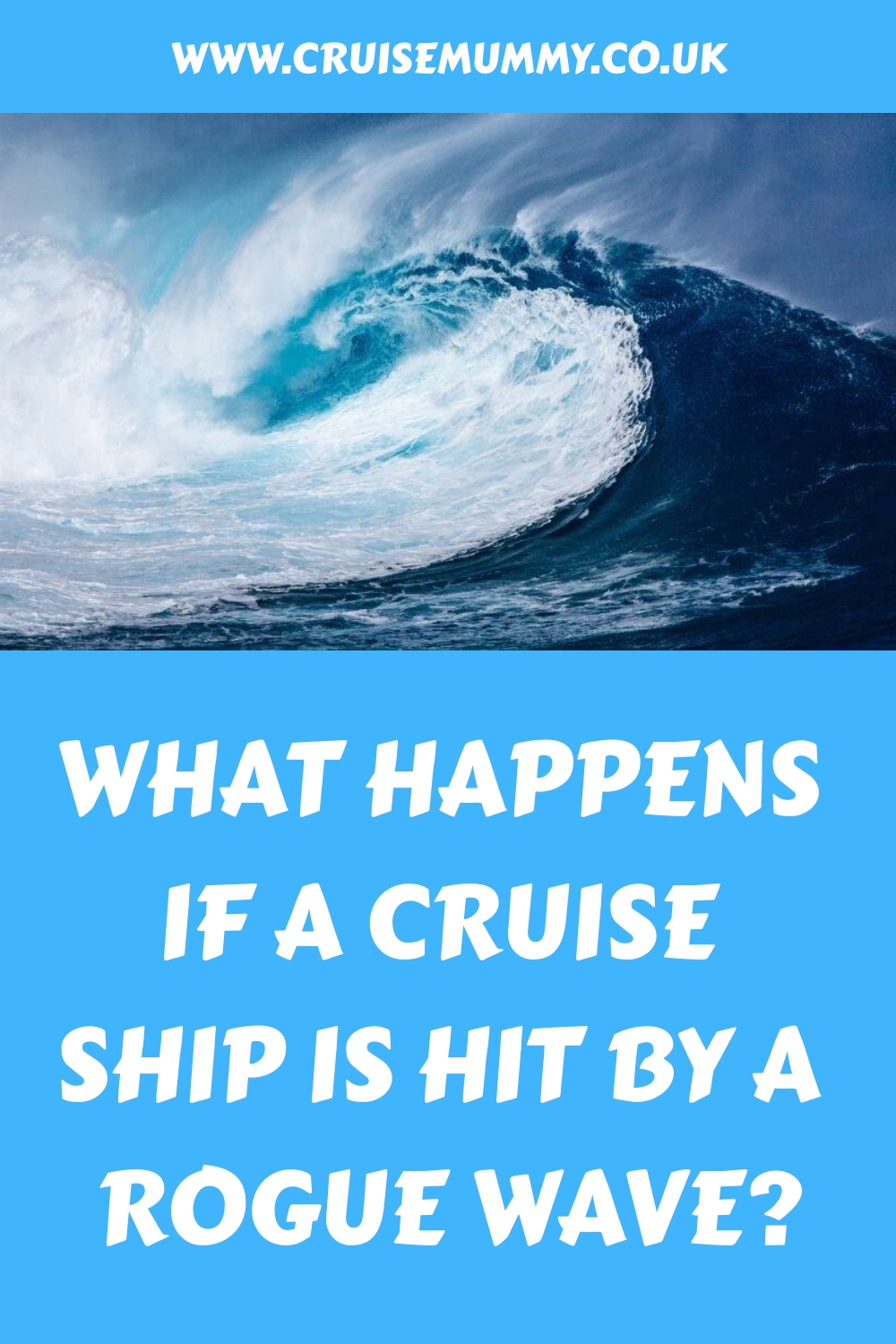

In this article, there is a quote “ . . . but cruise passengers don’t have anything to worry about.”
Well this is not the case as a passenger died yesterday on a cruise ships off the coast of Argentina that was hit by rogue wave.
Hi Jim. Thank you for your comment. I am saddened to hear the news that someone sadly lost their life due to a rogue wave. I have updated the article with details of the recent incident. Jenni